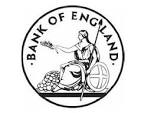
Doing the rounds has been a recent Bank of England Bulletin on modern money and money creation. For whatever reason, the Bank has seen fit to put some effort into explaining the realities of the monetary system.
Let me post a snippet of the summary:
In the modern economy, most money takes the form of bank deposits. But how those bank deposits are created is often misunderstood: the principal way is through commercial banks making loans.
Whenever a bank makes a loan, it simultaneously creates a matching deposit in the borrower’s bank account, thereby creating new money.
The reality of how money is created today differs from the description found in some economics textbooks:
Rather than banks receiving deposits when households save and then lending them out, bank lending creates deposits.
In normal times, the central bank does not fix the amount of money in circulation, nor is central bank money ‘multiplied up’ into more loans and deposits.
Although commercial banks create money through lending, they cannot do so freely without limit. Banks are limited in how much they can lend if they are to remain profitable in a competitive banking system.
Prudential regulation also acts as a constraint on banks’ activities in order to maintain the resilience of the financial system. And the households and companies who receive the money created by new lending may take actions that affect the stock of money — they could quickly ‘destroy’ money by using it to repay their existing debt, for instance.
While the recent publications from the Bank of England seem to emphasise that competition is a limiting factor on bank lending for an individual bank, there is no agreement that this holds true in aggregate. As Keynes noted many years ago in his Treatise on Money:
…it is evident that there is no limit to the amount of bank money which the banks can safely create provided they move forward in step.
As a banking system, there is no limit, and hence the ability to for massive cyclical swings in aggregate lending.
On the role of Quantitative Easing, the Bank has this to say (my emphasis):
Moreover, the new reserves are not mechanically multiplied up into new loans and new deposits as predicted by the money multiplier theory.
QE boosts broad money without directly leading to, or requiring, an increase in lending.
While the first leg of the money multiplier theory does hold during QE — the monetary stance mechanically determines the quantity of reserves — the newly created reserves do not, by themselves, meaningfully change the incentives for the banks to create new broad money by lending.
It is possible that QE might indirectly affect the incentives facing banks to make new loans, for example by reducing their funding costs, or by increasing the quantity of credit by boosting activity.
But equally, QE could lead to companies repaying bank credit, if they were to issue more bonds or equity and use those funds to repay bank loans.
On balance, it is therefore possible for QE to increase or to reduce the amount of bank lending in the economy.
However these channels were not expected to be key parts of its transmission: instead, QE works by circumventing the banking sector, aiming to increase private sector spending directly.
This makes it sound like QE’s main outcome is to prop up asset prices. While the story we hear about stimulating lending and investment simply may not happen unless firms were already planning to do it!
For me the key message from this Bulletin is that the monetary system is completely misunderstood by the supposed experts themselves, the economists. Major errors in understanding the rather practical matters of money and banking are still being passed down though mainstream textbooks, with little change in sight.
Indeed, some reactions to the Bank’s publication have been very defensive, bordering on ridiculous. It makes me wonder how apparently learned professors can teach classes on monetary policy from the textbook knowing that it contradicts reality. Or have they fooled themselves into thinking they know more about the mechanics of money than one of the world’s oldest central banks.
Tips, suggestions, comments and requests to [email protected] + follow me on Twitter@rumplestatskin